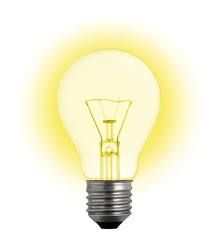Relationships
Why We Love a Good Mashup
How to achieve a creative collision for fun and profit.
Posted January 10, 2013

I wrote the following piece for a writers group and decided it would be fun as a blog. It's not "dark," like most of my postings, but I'm taking a break.
Last summer, Abraham Lincoln, Vampire Hunter was a hit at the movies. It merged the story of an iconic president with an age-old literary theme, as told via his secret diaries. A vampire kills Lincoln’s mother, which sends him on a mission of revenge. Inspired to fight for goodness and truth, he goes after other vampires.
This mashup comes from the same team that brought us Pride and Prejudice and Zombies. An editor was playing with fan-boy ideas and looking at books in the public domain. He decided to inject scenes of flesh-eating monsters into the 1913 classic. The same publisher has also produced The Meowmorphosis and Android Karenina, with more to come.
A mashup, a subcategory of transtexuality, uses existing data from unrelated sources in a different – often unexpected – form. It’s a song or book or some other type of production that has been morphed from pre-exiting works. Sometimes it’s just new lyrics laid over the track of another song, but more often it’s a transformative blend.
In fact, it’s become a cliché to pitch a movie idea as a mashup: “It’s Godzilla meets Wuthering Heights!” or “It’s Jaws meets Avatar!” When I pitched a book about going undercover into the vampire subculture, I described it as Black Like Me meets Gorillas in the Mist, to emphasize journalistic immersion. For a spoof in an earlier blog here, I merged 50 Shades of Grey with a Woody Allen story to get “50 Shades of Grey Matter.”
The television show, Glee, showcases episodes in which the Glee Club students devise mashups by merging two popular songs to create a third one from familiar elements. “Start Me Up,” for example, merged with “Livin’ on a Prayer,” and “Halo” with “Walking on Sunshine.”
Mashups appeal to us for the same reason that merchants are so keen on branding: we like what’s familiar. However, we also enjoy an element of surprise. Thus, we listen or read with anticipation to see how a story we know so well has been altered. Anticipation gives us a rush of brain chemicals that are implicated in pleasure. Although not everyone loves a mashup (especially rights holders), they can be quite fun.
So, maybe you aspire to get inventive. How can you ramp up for a mashup?
Neuropsychiatrist Nancy Andreasen studied the lives of inventive geniuses. She found that they have little need for the conceptual structures onto which most people grab for comfort and predictability. Because these geniuses can tolerate ambiguity, they’re open to new experiences. They’re also quite mentally agile and are constantly learning new things.
We have this wonderful part of our brain called the association cortex. It receives and integrates information from a variety of sources and then organizes our cognitive processes. The brain appears to be a system of feedback loops that constantly generate new thoughts. The trick to creating a mashup is to expose yourself to a variety of data and let it all mingle in your brain in just the right way.
Here’s a tip: A regular habit of meditation develops areas of the brain that are involved in mental agility. Researchers at Massachusetts General Hospital and Harvard Medical School found that people who meditate for 30 minutes each day have measurable differences in their grey matter – especially in the association cortex. A study involving Buddhist monks confirmed this. They had more “gamma power” in the frontal, parietal, and temporal association cortices. This finding suggests that training can improve our brain’s functioning.
Here’s another tip: Research at Northwestern University revealed that people in a good mood are better problem solvers and use sudden insight (aha!) more often than methodical calculations. Seventy-nine participants completed mood state inventories just before they performed an experimental task that involved word completion exercises. When they were scanned with an fMRI, activity in their association cortex was consistent with insight solutions. The better their mood, the more creative they were. The researchers suggested that a positive mood broadens the scope of attention, externally and internally, which allows for a greater range of data input.
So, whether you just want to enjoy a good mash-up or you aspire to invent one, you can train yourself to thwart the need for closure and blend diverse influences to pop out a new idea.




